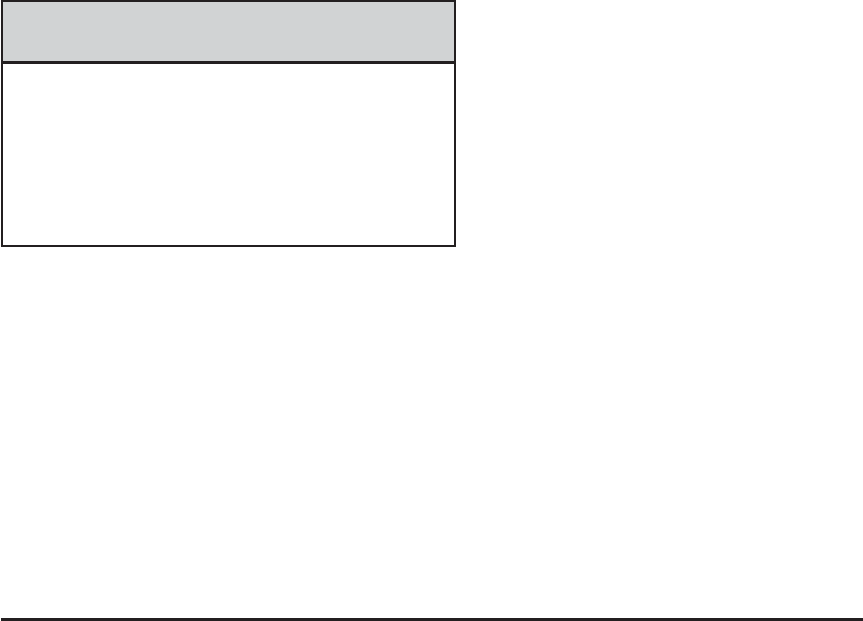
{CAUTION:
Shifting into a drive gear while the engine is
running at high speed is dangerous. Unless
your foot is firmly on the brake pedal, your
vehicle could move very rapidly. You could
lose control and hit people or objects. Do not
shift into a drive gear while your engine is
running at high speed.
Notice: Shifting out of PARK (P) or NEUTRAL (N)
with the engine running at high speed may damage
the transmission. The repairs would not be
covered by your warranty. Be sure the engine is not
running at high speed when shifting your vehicle.
Notice: Driving your vehicle if you notice that it is
moving slowly or not shifting gears as you increase
speed may damage the transmission. Have your
vehicle serviced right away. You can drive in
SECOND (2) when you are driving less than 35 mph
(55 km/h) and DRIVE (D) for higher speeds until then.
DRIVE (D): This position is for normal driving. It
provides the best fuel economy for your vehicle. If more
power is needed for passing, and the vehicle is:
• Going less than 35 mph (55 km/h), push the
accelerator pedal about halfway down.
• Going about 35 mph (55 km/h) or more, push the
accelerator pedal all the way down.
By doing this the vehicle will automatically shift down
to the next gear and have more power.
Downshifting the transmission in slippery road conditions
could result in skidding, see Skidding under Loss of
Control on page 4-12.
THIRD (3): This position is also used for normal driving.
However it reduces vehicle speed more than DRIVE (D)
without using your brakes. You might choose THIRD
(3) instead of DRIVE (D) when driving on hilly, winding
roads, when towing a trailer, so there is less shifting
between gears and when going down a steep hill.
2-31


















